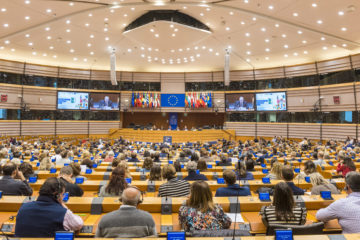The Rural Pact and the Long-Term Vision for Rural Areas
The European Commission sets out a long-term vision for the EU’s rural areas up to 2040, which identifies different areas for action to make rural areas and communities stronger, more connected, more resilient and more prosperous.
The invitation was issued in December 2021 by Vice-President Šuica (Democracy and Demography), Commissioner Wojciechowski (Committee on Agriculture) and Commissioner Ferreira (Cohesion and Reforms) to participate in the Rural Pact Community. They encouraged all interested authorities and organisations to express their support for the ten common objectives of the vision and to actively participate in the development of the Pact. The pact proposal was approved at the Rural Pact Conference, held on 16 June 2022.
The Rural Pact is made up of 10 common objectives:
- Attractive spaces, developed in a harmonious territorial development, unleashing their specific potential, making them places of opportunity and offering local solutions to help deal with the local effects of global challenges
- Committed to multi-level and place-based governance, developing integrated strategies using collaborative and participatory approaches, benefiting from tailor-made policy combinations and interdependencies between urban and rural areas
- Providers of food security, economic opportunities, goods and services for society at large, such as bio-based materials and energy, but also high-quality local products based on the community, renewable energy, retaining a fair share of the value generated.
- Vibrant communities focused on well-being, including livelihoods, equity, prosperity and quality of life, where all people live and work well together, with adequate capacity for mutual support.
- Inclusive communities of intergenerational solidarity, equity and renewal, open to newcomers and promoting equal opportunities for all.
- Thriving sources of nature, reinforced by and contributing to the objectives of the Green Deal, including climate neutrality, as well as the sustainable management of natural resources.
- Take full advantage of digital innovation with equal access to emerging technologies, widespread digital literacy, and opportunities to learn more advanced skills.
- Entrepreneurial, innovative and qualified people, co-creators of technological, ecological and social progress.
- Vibrant places with efficient, accessible and affordable public and private services, including cross-border services, offering tailor-made solutions (such as transport, education, training, health and care, including long-term care, social life and retail).
- Places of diversity, making the most of their unique assets, talents and potentials.
The Rural Pact, on the other hand, is a framework for cooperation between national, regional and local governments, civil society organisations, businesses, academics and citizens to act towards the common objectives of the Rural Vision. Its objectives are to:
- Amplify the voice of rural areas
- Network and learn jointly
- Encourage and list actions

